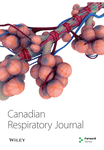Oscillometric and Spirometric Bronchodilator Response in Preschool Children with and without Asthma
Abstract
BACKGROUND: Bronchodilator responses (BDR) are routinely used in the diagnosis and management of asthma; however, their acceptability and repeatability have not been evaluated using quality control criteria for preschool children.
OBJECTIVES: To compare conventional spirometry with an impulse oscillometry system (IOS) in healthy and asthmatic preschool children.
METHODS: Data from 30 asthmatic children and 29 controls (two to six years of age) who underwent IOS and spirometry before and after salbutamol administration were analyzed.
RESULTS: Stable asthmatic subjects significantly differed versus controls in their spirometry-assessed BDR (forced expiratory volume in 1 s [FEV1], forced vital capacity and forced expiratory flow at 25% to 75% of forced vital capacity) as well as their IOS-assessed BDR (respiratory resistance at 5 Hz [Rrs5], respiratory reactance at 5 Hz and area under the reactance curve). However, comparisons based on the area under the ROC curve for ΔFEV1 % initial versus ΔRrs5 % initial were 0.82 (95% CI 0.71 to 0.93) and 0.75 (95% CI 0.62 to 0.87), respectively. Moreover, the sensitivity and specificity for ΔFEV1 ≥9% were 0.53 and 0.93, respectively. Importantly, sensitivity increased to 0.63 when either ΔFEV1 ≥9% or ΔRrs5 ≥29% was considered as an additional criterion for the diagnosis of asthma.
CONCLUSION: The accuracy of asthma diagnosis in preschool children may be increased by combining spirometry with IOS when measuring BDR.




